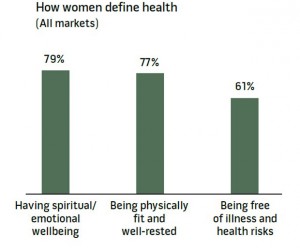
The spiritual and emotional top the physical in women’s definition of “health,” based on a multi-country survey conducted in Brazil, Germany, Japan, the UK and the U.S.
The Power of the Purse, a research project sponsored by the Center for Talent Innovation, underscores women’s primary role as Chief Medical Officers in their families and social networks. The research was sponsored by health industry leaders including Aetna, Bristol-Myers Squibb, Cardinal Health, Eli Lilly and Company, Johnson & Johnson, Merck & Co., Merck KGaA, MetLife, Pfizer, PwC, Strategy&, Teva, and WPP.
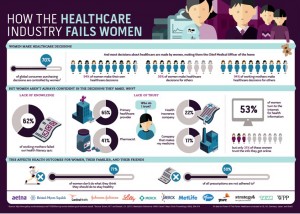 The study’s summary infographic is titled How the Healthcare Industry Fails Women, which in itself is a sort of indictment, a mea culpa, of the study’s sponsoring organizations. Among the failures found in the survey are women’s “starvation” factors – being starved for time, starved for knowledge (about health and healthcare, and health literacy challenges), and starved for trust vis-à-vis health insurance plans and pharmaceutical companies.
The study’s summary infographic is titled How the Healthcare Industry Fails Women, which in itself is a sort of indictment, a mea culpa, of the study’s sponsoring organizations. Among the failures found in the survey are women’s “starvation” factors – being starved for time, starved for knowledge (about health and healthcare, and health literacy challenges), and starved for trust vis-à-vis health insurance plans and pharmaceutical companies.
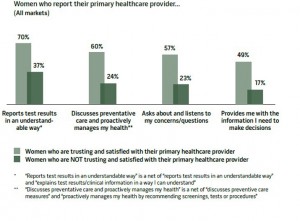 Health Populi’s Hot Points: As these CMOs exercise their healthcare shopping muscles in the era of growing out-of-pocket costs and high-deductible health plans, the issues of trust and transparency take center-stage. Without trust, there’s no health engagement. Without transparency, there’s lack of clarity about price, quality, and accessibility (especially as health provider networks narrow)– which consumers require to make clinically and financially rational choices in healthcare shopping mode.
Health Populi’s Hot Points: As these CMOs exercise their healthcare shopping muscles in the era of growing out-of-pocket costs and high-deductible health plans, the issues of trust and transparency take center-stage. Without trust, there’s no health engagement. Without transparency, there’s lack of clarity about price, quality, and accessibility (especially as health provider networks narrow)– which consumers require to make clinically and financially rational choices in healthcare shopping mode.
The third exhibit presents data on women reporting various actions their primary healthcare providers take, cross-tabbed by the woman’s level of trust and satisfaction with their health provider. Note that the higher bars represent women who trust their PCP, who also enjoy higher levels of healthcare providers reporting tests in understandable ways, discussing and managing preventive care, asking about and listening to concerns, and providing the woman with information she needs to make decisions. Together, these actions fall under the umbrella of “communication,” with no small dose of empathy.
The CMO hat is another job most women don on top of her other daily responsibilities of caregiving for children, caregiving for aging parents, working inside the home for home-keeping, working outside the home for a pay check, joining in community activities, and increasingly managing the family’s money.
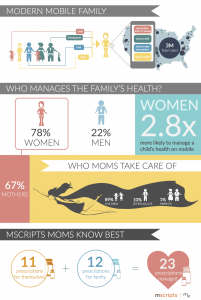 Carolyn Buck Luce, a co-author of the study, said, “There is not even the acknowledgment that this is a job.”
Carolyn Buck Luce, a co-author of the study, said, “There is not even the acknowledgment that this is a job.”
But women know this and are ahead of the healthcare industry in project managing their way through daily tasks, especially enabled through the smartphone and mobile health tools that “extend mom’s hands,” in the eyes of mScripts’ research into women using mobile devices for health-related activities (the study’s infographic shown).
The pharma industry and health insurance companies are particularly low on the CMO’s trust-meter, but these companies have the opportunity to support women especially in the areas of enabling medication adherence and personal health objectives.


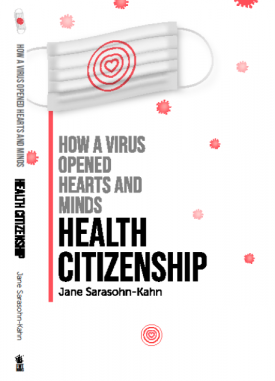
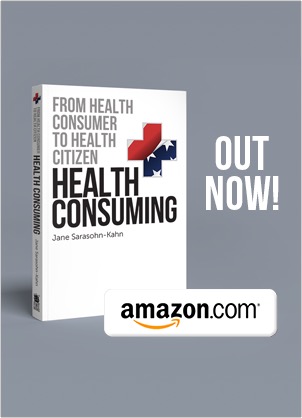
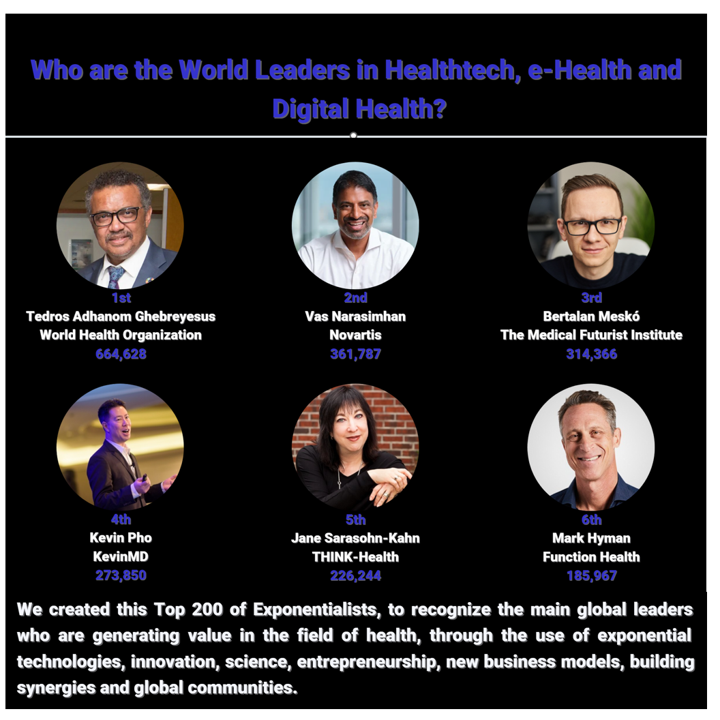 I'm in amazing company here with other #digitalhealth innovators, thinkers and doers. Thank you to Cristian Cortez Fernandez and Zallud for this recognition; I'm grateful.
I'm in amazing company here with other #digitalhealth innovators, thinkers and doers. Thank you to Cristian Cortez Fernandez and Zallud for this recognition; I'm grateful. Jane was named as a member of the AHIP 2024 Advisory Board, joining some valued colleagues to prepare for the challenges and opportunities facing health plans, systems, and other industry stakeholders.
Jane was named as a member of the AHIP 2024 Advisory Board, joining some valued colleagues to prepare for the challenges and opportunities facing health plans, systems, and other industry stakeholders.  Join Jane at AHIP's annual meeting in Las Vegas: I'll be speaking, moderating a panel, and providing thought leadership on health consumers and bolstering equity, empowerment, and self-care.
Join Jane at AHIP's annual meeting in Las Vegas: I'll be speaking, moderating a panel, and providing thought leadership on health consumers and bolstering equity, empowerment, and self-care.